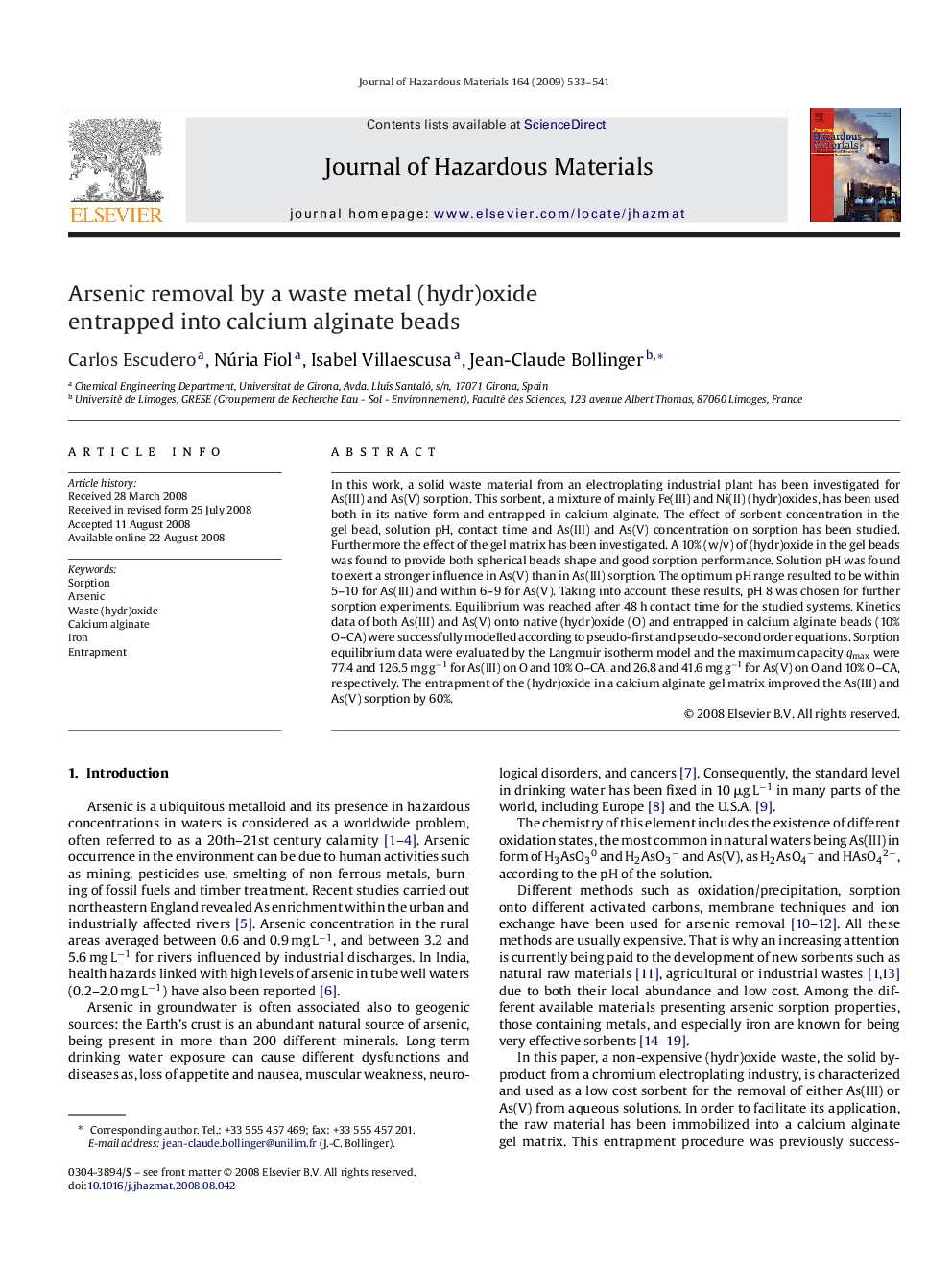| Article ID | Journal | Published Year | Pages | File Type |
|---|---|---|---|---|
| 582456 | Journal of Hazardous Materials | 2009 | 9 Pages |
Abstract
In this work, a solid waste material from an electroplating industrial plant has been investigated for As(III) and As(V) sorption. This sorbent, a mixture of mainly Fe(III) and Ni(II) (hydr)oxides, has been used both in its native form and entrapped in calcium alginate. The effect of sorbent concentration in the gel bead, solution pH, contact time and As(III) and As(V) concentration on sorption has been studied. Furthermore the effect of the gel matrix has been investigated. A 10% (w/v) of (hydr)oxide in the gel beads was found to provide both spherical beads shape and good sorption performance. Solution pH was found to exert a stronger influence in As(V) than in As(III) sorption. The optimum pH range resulted to be within 5-10 for As(III) and within 6-9 for As(V). Taking into account these results, pH 8 was chosen for further sorption experiments. Equilibrium was reached after 48 h contact time for the studied systems. Kinetics data of both As(III) and As(V) onto native (hydr)oxide (O) and entrapped in calcium alginate beads (10% O-CA) were successfully modelled according to pseudo-first and pseudo-second order equations. Sorption equilibrium data were evaluated by the Langmuir isotherm model and the maximum capacity qmax were 77.4 and 126.5 mg gâ1 for As(III) on O and 10% O-CA, and 26.8 and 41.6 mg gâ1 for As(V) on O and 10% O-CA, respectively. The entrapment of the (hydr)oxide in a calcium alginate gel matrix improved the As(III) and As(V) sorption by 60%.
Related Topics
Physical Sciences and Engineering
Chemical Engineering
Chemical Health and Safety
Authors
Carlos Escudero, Núria Fiol, Isabel Villaescusa, Jean-Claude Bollinger,
